[vc_row][vc_column][vc_column_text]
Isfahan one of the best and most beautiful and tidiest cities of Iran used to be the capital of Persia in glory days of 17th century. It is called “half-of-the-world” by many people due to its uniqueness and grandeur. It is a live museum of artisans and the handicrafts with its historic bazaar, attractive bridges, and adorned mosques. The city of blue domes is the home land of Muslims, Jews and Christians who live peacefully together. As Jean Chardin, a 17th-century French traveler, writes: “The greatest and the most beautiful town in the whole of Orient” and “was expressly made for the delights of love”.
Here are the most valuable attractions in tourists’ eyes:[/vc_column_text][vc_empty_space height=”12px”][/vc_column][/vc_row][vc_row][vc_column][vc_column_text]
- Naqsh-e Jahan Square: Known also as Imam Square, is the masterpiece of Safavid era and one of the UNESCO’s World Heritage Sites. The royal square was the place where Shah and his people met. It is surrounded by four highlights including Imam Mosque, Sheikh Lotfolah Mosque, Alighapoo edifice and Bazaar.
[/vc_column_text][vc_masonry_media_grid element_width=”3″ grid_id=”vc_gid:1534842239753-e582bce3-4955-10″ include=”5482,5583,6846,6844,8888,8890,8891,8892″][/vc_column][/vc_row][vc_row][vc_column][vc_column_text]
Imam/Shah Mosque: Designed with blue-tiled mosaic presents perfectly proportioned architecture of Safavid era and creates a marvelous view to your eyes. The majesty of the architecture of this mosque cannot be described in words; thus, you must go there to pay a visit in person.
[/vc_column_text][vc_empty_space height=”10px”][/vc_column][/vc_row][vc_row][vc_column][vc_column_text]
Ali Qapu Palace: A huge portal that is opposite to Sheikh Lotfollah Mosque. Shah Abbas used to celebrate Nowrooz (Iranian New Year) in this fabulous edifice. 18 columns of this monumental palace are decorated with mirrors and the ceiling is covered with great paintings. A splendid music hall is in the sixth floor with deep circular niches in the walls for music echoing. Shah used to sit in the edifice terrace and enjoy watching polo matches.
[/vc_column_text][/vc_column][/vc_row][vc_row][vc_column][vc_column_text]
Sheikh Lotfollah Mosque: A valuable monument dominating the boundary of the Naqshe Jahan Square which was the first one among the four constructed edifices around the Square. Although, in comparison with Imam Mosque, Sheikh Lotf Allah Mosque is very simple in design, but it has an exceedingly complex decoration both inside and outside. The exterior of its single dome is richly ornamented with exquisitely made and beautiful tiles.
[/vc_column_text][vc_masonry_media_grid element_width=”2″ grid_id=”vc_gid:1534842239825-26897407-8be2-3″ include=”8894,8895,6838,6839,8896″][vc_empty_space height=”10px”][/vc_column][/vc_row][vc_row][vc_column][vc_column_text]
- Isfahan Bazaar: A historical market in Isfahan and one of the oldest and largest bazaars in the Middle East. The bazaar is a two-kilometer street connecting Isfahan’s old city to the new part. Every line of the bazaar is allocated to certain types of goods, such as colorful Iranian carpets, hand woven rugs, shoes, spices, gold, silver and handicrafts such as Moarraq, a sort of manual wood working, Khatam, the wooden articles with fine pieces of wood, bone and metal precisely cut in geometrical shapes. There are also several workshops where you can see the handicrafts making process.
[/vc_column_text][vc_masonry_media_grid element_width=”2″ grid_id=”vc_gid:1534842239868-b93ed1ed-b87d-3″ include=”8899,8900,8901,8902″][vc_empty_space height=”10px”][/vc_column][/vc_row][vc_row][vc_column][vc_column_text]
- Jolfa square: The Armenian square of Jolfa in Isfahan is a place where Christians live peacefully and do their religious rites. Their ancienter migrated from Jolfa town in the north of Iran during Safavid era. There are Armenian churches, an old cemetery and music museum in this fashionable area. In the afternoons and evenings many visitors are strolling the quarter and enjoying Armenian coffee in a liberal atmosphere.
Vank Cathedral: Another marvelous piece of art with splendid architecture is Vank Cathedral in the Armenian square. Its architecture is a combination of 17th century Safavid style with lofty arches and a dome with Islamic design. The biblical story is depicted by the paintings drawn on the brick dome. Its museum is the house of valuable collections gathered from all the Armenian world such as Safavid costumes, tapestries, European paintings, embroideries and a small seven-gram bible believed to be the smallest written text in seven languages.
Music Museum: There are more than 300 Persian instruments including Kamancheh, Tar, Ney, majestic harp and nomadic camel bells. It is not just a museum full of musical instruments; visitors have access to the less precious pieces and they can even try to play. They also enjoy masters’ performance of traditional Persian love songs.
[/vc_column_text][vc_masonry_media_grid element_width=”2″ grid_id=”vc_gid:1534842239891-6a1d9a31-942d-0″ include=”5665,7917,8927,8928,8929,8930″][vc_empty_space height=”10px”][/vc_column][/vc_row][vc_row][vc_column][vc_column_text]
- Menar-e Jonban (Shaking Minarets): It is a historical monument that was constructed during the Ilkhanid era. The edifice was decorated with dark blue tiles and bricks. There is a marvelous peculiarity about this building. At the summit of one of the minarets, if someone hold the minaret and shake it by hands, the other minaret on the opposite side will surprisingly shake, too. This instance of unprecedented coupled vacillation is observable from the ground.
[/vc_column_text][/vc_column][/vc_row][vc_row][vc_column][vc_column_text]
- The City of Bridges: One of the remarkable attractions in Isfahan is its bridges. Five old bridges have constructed cross the seasonal river of Zayandehrood. They date from Safavid era and even earlier.
Si-o-Seh Pol: This ancient bridge is probably Isfahan’s most famous bridge. It is made up of 33 arches in a row on the river. During the Safavid era the ceremonial feasts of Abrizan (throwing water) of the Armenians were held beside this bridge. It is regarded as one of the masterpieces of Iran’s and the whole world’s architecture and bridge construction.
Pole Khaju (Khaju Bridge): Due to the pleasing construction idea of the bridge, it becomes one of the famous bridges of Iran. It is built in Safavid era. The primary function of this bridge was abode for public meeting or as a tea-house.
Pole Marnan (Marnan Bridge): The exact date of the bridge construction is unknown but there are signs in the bridge foundation that date back to Sassanid Dynasty. The Bridge used to be the important western bridge in Isfahan during the Safavid era.
Pole Shahrestan (Shahrestan Bridge): The pillars are made of cement and ballast. The foundation of the bridge is Sassanid and Achaemenid and the buildings on the bridge have influenced by Islamic architecture.
Pole Choobi (Choobi Bridge): Another famous bridge of Isfahan, constructed by Shah Abbas II during Safavid era. it was built in order to irrigate Safavid royal gardens close by.
[/vc_column_text][vc_masonry_media_grid element_width=”3″ grid_id=”vc_gid:1534842239934-be851ce4-3b17-0″ include=”8934,8935,5588,8936″][vc_empty_space height=”10px”][vc_empty_space height=”10px”][/vc_column][/vc_row][vc_row][vc_column][vc_column_text]
- Isfahani art of cuisine: The popular Iranian cuisine is ancient, rich and indeed delicious. It is so various due to the extent of the country and the climate diversity. The traditional restaurants in Isfahan are dedicated to specific traditional foods of the area, do not miss them.
Beryani, the real taste of baked meat: This is the most famous traditional food goes back to about 400 years ago, served in unique restaurants of Isfahan. It is the burger shape mixture of lamb, saffron and some herbs served in a traditional bread.
Gaz: Gaz is the traditional name of Persian nougat which is a kind of candy originated from the city of Isfahan and Boldaji. It is decorated with small pieces of pistachio or almond to give it the special taste of nuts. You can also shop this tasty and sweet candy and take it as souvenir to your country and eat it along with a cup of saffron tea.
[/vc_column_text][vc_masonry_media_grid element_width=”2″ grid_id=”vc_gid:1534842239955-65438f89-b962-10″ include=”8939,8940,8941,8942,8943″][/vc_column][/vc_row][vc_row][vc_column][vc_empty_space height=”10px”][vc_column_text]
- Unique Gardens: This azure city which shines like a piece of diamond in the center of Iran’s plateau is intertwined with lovely gardens to give a new sense of the beauty of urban spaces. There is a famous historical avenue constructed during Safavid dynasty named Chahar Bagh (Four Gardens), this 6-km lovely street connects the north of Isfahan to the southern parts.
Chehel Sotoun: A pavilion with the Achaemenid-inspired style with an elegant terrace in the middle of a garden at the end of a long pool, a masterpiece of Safavid era and declared as a UNESCO heritage garden. The important meetings and feasts were held in this palace during Safavid dynasty. “Chehel Sotoun” means forty pillars that is the number of twenty wooden pillars plus their reflections in the long pool in front of the palace. Moreover, it contains many eye-catchin paintings on ceramic.
Hasht-Behesht: It is a magnificent palace in a paradise like garden belonging to the Safavid era. The name of the pavilion has been derived from the “Hashti” meaning entrance or gate and Hasht Behesht means the gate to the Heaven. The decorations of the edifice and the beautiful and majestic garden around the palace is so artistic that has been admired by many of its visitors.
Birds Garden: For sure it is one of the world’s most beautiful birds’ gardens. This 17,000 square meter garden is filled with nearly 5,000 animals of 130 species. Each section of this recreational, scientific and research center welcomes the interested lovers of nature and specifically birds.
Flowers Garden: The garden is comprised of different kinds of gardens including the Rose garden, edible and medical herbs garden, the Chrysanthemum Garden, the Iris Flower Garden, a greenhouse and an area full of wonderful fountains. The whole garden’s surface is covered with grass and seasonal flowers and ornamental small trees.
[/vc_column_text][/vc_column][/vc_row][vc_row][vc_column][vc_masonry_media_grid element_width=”2″ grid_id=”vc_gid:1534842239989-4a7a8a07-af71-7″ include=”8978,8979,8982,8983,8984″][vc_empty_space height=”10px”][/vc_column][/vc_row][vc_row][vc_column][vc_column_text]
- Aquarium: It is a large aquarium with a duck pond and a variety of aquatic life in sweet and salty water including Japanese carp and sharks. Its tunnel is the largest of its kind in the Middle East and is built in an underground area with about six-meter height.
[/vc_column_text][vc_masonry_media_grid element_width=”2″ grid_id=”vc_gid:1534842240018-5959f859-3e0c-5″][/vc_column][/vc_row][vc_row][vc_column][vc_column_text]
- Nain: It is a town in 140km east of Esfahan. The most important monuments of Nain are Jame Mosque, one of the oldest mosques in Iran, the splendid Narenj Fortress, the traditional house of Pirnia, the traditional Bazaar, Qanat and a Zurkhaneh. The town is also famous for its high-quality carpets.
[/vc_column_text][vc_masonry_media_grid element_width=”2″ grid_id=”vc_gid:1534842240026-9050a03b-3661-4″][/vc_column][/vc_row][vc_row][vc_column][vc_column_text]
- Varzaneh desert: It is located 105km southeast of Isfahan. Varzaneh is popular for its spectacular desert and safety. Due to the short distance from Isfahan, it is rated as one of the most accessible deserts in Iran. Varzaneh, is unique in the local women’s costumes. They wear white chadors, while the black one is common in Iran.
[/vc_column_text][vc_masonry_media_grid element_width=”2″ grid_id=”vc_gid:1534842240036-1077d2e7-1bb1-1″][/vc_column][/vc_row]

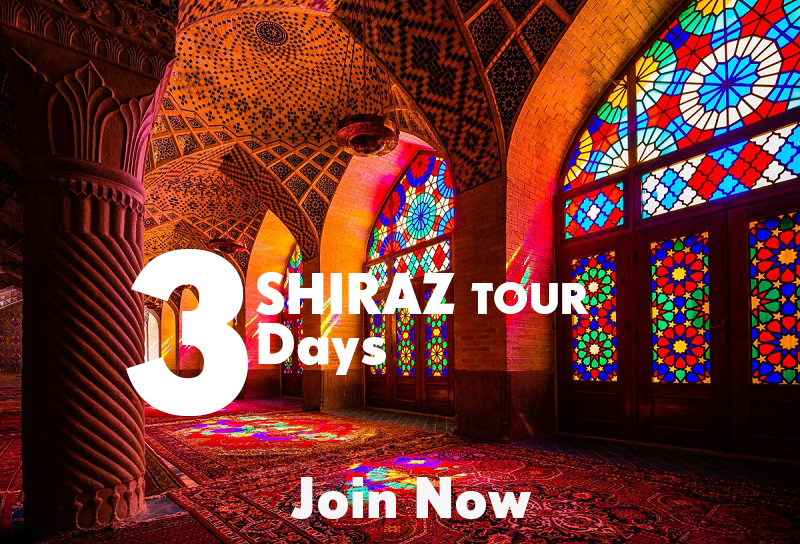
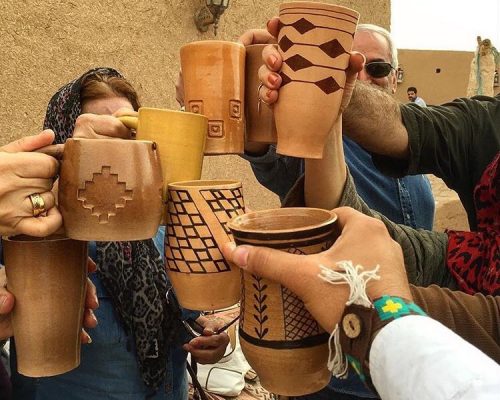
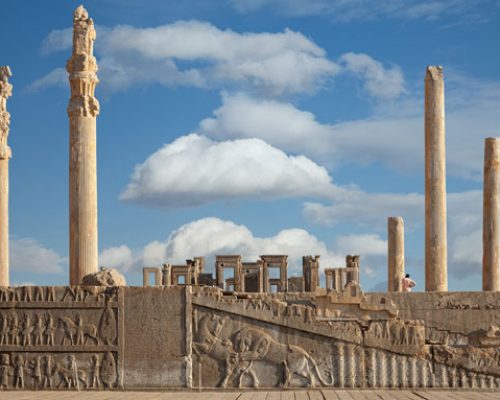

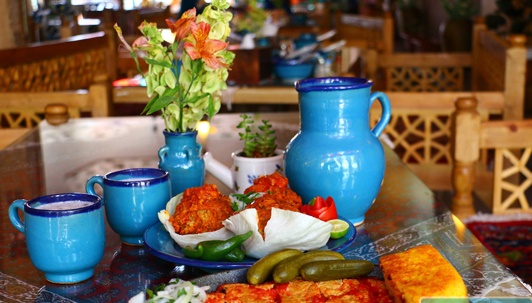

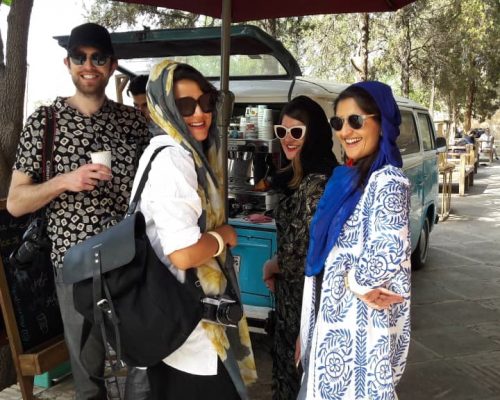



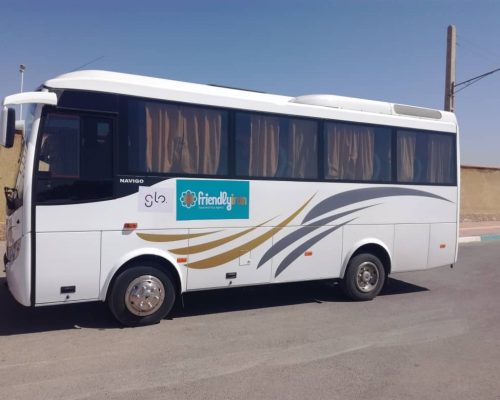























 Azari Traditional Tea House:
Azari Traditional Tea House: 












